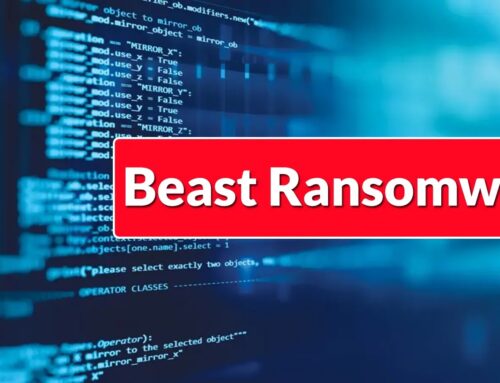
Crimson Collective Leverages AWS Services to Exfiltrate Sensitive Data
The Crimson Collective: A New Cloud Threat Targeting AWS Environments
In the evolving landscape of cyber threats, a new and concerning player has emerged: the Crimson Collective. This group has rapidly distinguished itself by actively targeting Amazon Web Services (AWS) cloud environments, orchestrating sophisticated data exfiltration and extortion campaigns. Their recent claim of responsibility for an attack on Red Hat, asserting successful compromise and theft of private repositories from Red Hat’s GitLab infrastructure, underscores the severity and potential impact of their operations.
For IT professionals, security analysts, and developers relying on AWS for their infrastructure, understanding the tactics, techniques, and procedures (TTPs) of the Crimson Collective is paramount. This analysis delves into their modus operandi, highlighting the critical vulnerabilities and operational security gaps they exploit.
Understanding the Crimson Collective’s Modus Operandi
The Crimson Collective’s activities are characterized by their focus on cloud services, specifically AWS. Their alleged attack on Red Hat is a stark illustration of their capability to penetrate well-secured environments and exfiltrate sensitive data. While specific technical details regarding their initial access vectors and exploitation tools remain under investigation, their methods likely involve a combination of:
- Compromised Credentials: Phishing, brute-forcing, or credential stuffing attacks targeting AWS management console users or IAM roles.
- Exploiting Misconfigurations: Leveraging improperly configured S3 buckets, EC2 instances, or other AWS services that expose data or provide unauthorized access.
- Supply Chain Attacks: As evidenced by the Red Hat claim involving GitLab, they may target third-party development tools and platforms to gain access to an organization’s resources.
- Privilege Escalation: Once initial access is gained, the group likely employs various techniques to elevate privileges within the AWS environment, gaining broader control.
- Data Exfiltration via AWS Services: Instead of traditional C2 channels, the group leverages legitimate AWS services (e.g., S3, EC2 instances acting as proxies, SQS, or SNS) to move stolen data out of the compromised environment, making detection more challenging.
This approach highlights a growing trend where threat actors “live off the land” within cloud providers, using native services to blend in with legitimate traffic and bypass traditional security controls.
The Red Hat Incident: A Case Study in Cloud Compromise
The Crimson Collective’s claim against Red Hat, specifically the alleged compromise and theft of private repositories from GitLab, provides critical insight into their capabilities. This incident, while still under full investigation by Red Hat, suggests:
- Targeting Development Infrastructure: Cloud-hosted development platforms like GitLab are high-value targets due to the sensitive intellectual property and proprietary code they contain.
- Inter-Service Trust Exploitation: Access to GitLab infrastructure could potentially be leveraged to gain further access to integrated AWS services through CI/CD pipelines or service accounts.
- Data Extortion as a Primary Goal: The public claim of data theft often precedes or accompanies demands for payment, indicating extortion as a core objective of the Crimson Collective.
Organizations must treat their development environments with the same, if not greater, level of security as their production systems.
Remediation Actions and Proactive Defense Strategies
Defending against groups like the Crimson Collective requires a multi-layered approach focused on robust cloud security practices. Implementing these measures can significantly reduce an organization’s attack surface in AWS environments.
AWS Security Hardening
- Strong IAM Policies and Multi-Factor Authentication (MFA): Enforce least privilege for all IAM users and roles. Mandate MFA for all access, especially for administrative accounts. Regularly review and audit IAM policies.
- Network Segmentation: Implement strict network segmentation using VPCs, subnets, and security groups. Limit inbound and outbound traffic to only what is absolutely necessary.
- S3 Bucket Security: Ensure S3 buckets are not publicly accessible unless explicitly required and secured. Implement bucket policies, access control lists (ACLs), and block public access settings.
- Patch Management: Proactively patch and update all operating systems and applications running on EC2 instances and other compute services.
- Vulnerability Scanning: Regularly scan AWS resources for known vulnerabilities using tools like Amazon Inspector.
Data Protection and Monitoring
- Data Encryption: Encrypt data at rest (e.g., S3, EBS, RDS) and in transit (e.g., TLS for network communication) using AWS Key Management Service (KMS) or customer-managed keys.
- CloudTrail and GuardDuty: Enable AWS CloudTrail for logging all API activity and configure Amazon GuardDuty for intelligent threat detection and continuous monitoring for malicious activity and unauthorized behavior.
- Security Hub: Utilize AWS Security Hub to centralize security alerts and automate security checks for compliance with industry standards and best practices.
- AWS WAF and Shield: Implement AWS Web Application Firewall (WAF) to protect web applications from common web exploits and DDoS attacks. Use AWS Shield for enhanced DDoS protection.
Developer and CI/CD Pipeline Security
- Secure Development Practices: Integrate security into the entire Software Development Life Cycle (SDLC). Conduct regular code reviews and security testing.
- Secrets Management: Use AWS Secrets Manager or Parameter Store to securely store and retrieve credentials, API keys, and other secrets, avoiding hardcoding them in code.
- CI/CD Pipeline Hardening: Secure CI/CD pipelines against unauthorized access and ensure build environments are ephemeral and configured with least privilege.
Conclusion
The emergence of the Crimson Collective highlights the critical need for robust, proactive cybersecurity measures in cloud environments. Their strategy of leveraging native AWS services for exfiltration, coupled with targeting critical development infrastructure, presents a formidable challenge. Organizations must prioritize comprehensive AWS security hardening, continuous monitoring, and secure development practices to protect their sensitive data and intellectual property from this evolving threat. Staying informed about new threat groups like the Crimson Collective and adapting security strategies accordingly is no longer optional; it is fundamental to maintaining organizational resilience.





